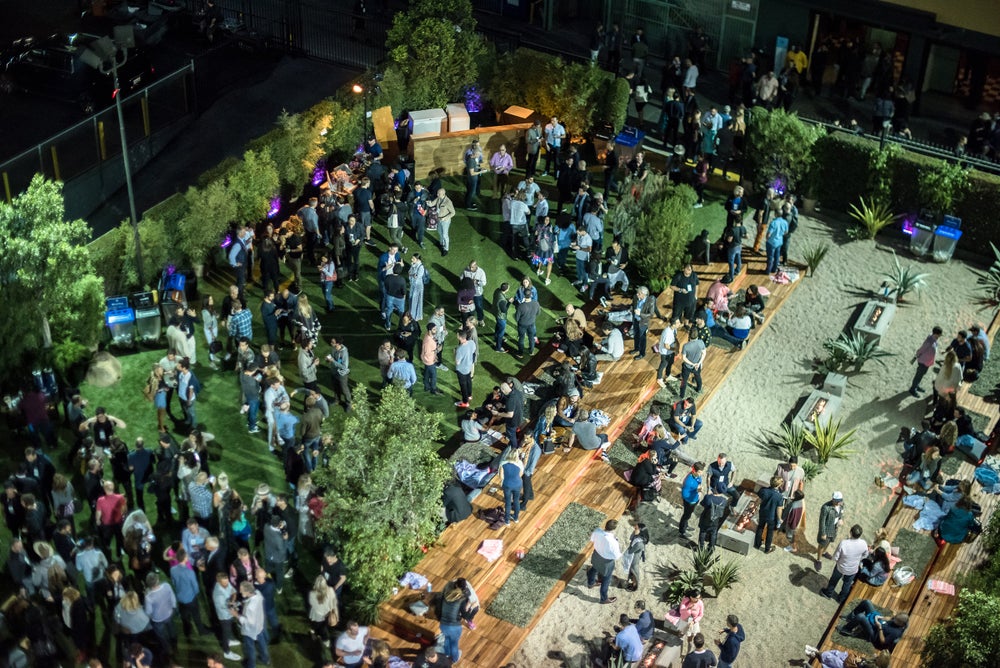Opinions expressed by Entrepreneur contributors are their own.

Image Credit: Summit Group. Image from long after the events described in this article.
As a new entrepreneur with almost zero connections or resources, I was desperate for a group of other entrepreneurs who could relate to me. So I cold-called 20 entrepreneurs who’d reluctantly agreed to come on a ski trip I offered to host. This is the story of that first Summit event — a small gathering that, over the next decade, would grow into more than 250 events, with some as large as 3,000 people, and it would transform my life in the process.
But back at the beginning, all I knew was that I needed to show people a good time. It wasn’t easy.
I landed in Salt Lake City on a crisp, clear Friday afternoon in April 2008 — only two hours ahead of my guests. I rented a Suburban and raced to a convenience store to pick up some snacks for their arrival, and proudly bought beer for the first time in my life.
Everything seemed set as I arrived at the house to unpack. I now had a case of beer in the refrigerator and what seemed like a mountain of snacks on the table. And it was a mountain of snacks—for one person. We’ll probably have beer one night this weekend, I imagined, and everyone will have one.
As guests began to trickle in, I graciously gave a tour of the rental home to each new person who arrived.
“There are no plans for this weekend,” I told one guest, Joel Holland, as we headed for the kitchen. “The idea is for everybody to get to know each other. The entire weekend is one big party!” I proudly swung open the door of the refrigerator to reveal twenty-four cans of beer.
One case of beer? For twenty people? This, Joel thought, is going to be one hell of a party.
With beer having historically proven itself to be a wonderful social lubricant for young people in uncomfortable settings, those 24 cans disappeared almost immediately once the guests found out they’d be sharing rooms with people they didn’t know.
All anybody could feel at this point was a deep sense of awkwardness.
Ricky Van Veen and Josh Abramson from CollegeHumor immediately zeroed in on all the discomfort and decided it would be fun to create some more. When the group piled into a few cars and headed to the upscale restaurant that my mother had scouted out for dinner, Ricky and Josh were already hatching a plot.
The group convened around a long table, with me positioned at the head. When I got up to go to the bathroom, Ricky and Josh quickly told everyone their plan: They would hand the maître d’ a white card to place in front of me when I sat back down. They asked the rest of the group to play along.
I returned to the table and took his seat, and the maître d’ gave an award-winning performance. “So sorry,” he said remorsefully, delicately placing the note in front of me. He was so sincere that it was obvious there was a problem.
“Elliott, what’s that?” Josh pried.
“I just got the weirdest card,” I said.
“What does it say?”
Your attire is not appropriate to the standards of the club, and we ask that you change immediately.
—Management
“Oh man, you need to go change,” someone called out.
“I don’t have extra clothes in the car!”
“Well, where’s the closest store you can buy some?”
“I don’t know.”
“But you have to change.”
“What’s wrong with my clothes?”
“Look at your shirt. It’s not appropriate.”
“It’s a button-down shirt. The same kind as you’re wearing.”
“It’s not the same. Look at the color of your shirt!”
This went on until every inch of my attire had been thoroughly dissected down to the contour of my collar. My frustration mounted until everyone burst into laughter.
I shut his eyes and gave a reluctant smile. Then I began to laugh along with the table. In that moment, all the tension that had been accumulating from the time everyone arrived was released. Lively conversations sprang up around the table, and everyone began to relax into the evening and connect on a deeper level.
It was an initiation that was a better bonding experience than anything I could’ve planned. Nobody minded sharing a bedroom with others after that. There was so much to rehash and laugh about, most of it at my willing expense. It felt like summer camp, except with more snow and less poison ivy.
The next day, everyone hit the slopes. Sam Altman, the future president of Y Combinator, and the founders of Vimeo and TOMS were hanging out and swapping stories of their struggles. They were learning about each other’s best business practices and how they balanced work with their personal lives. Each shed light on past failures and what could be learned from them. By the end of the weekend, everybody was familiar with everyone else’s businesses and the stories that made them. Some of the guests had even begun lifelong friendships.
But perhaps I had learned the biggest lesson of all. So many people are frightened to throw an event, set up a meeting, or even send an important email unless it’s perfectly crafted — as if you shouldn’t put yourself out there unless everything is flawless.
I understood in that moment that the most important quality an event can have is space for the unplanned — room for the spontaneity and randomness that create sparks. It’s the difference between a highly polished apple you get in the supermarket and the slightly bruised organic one that’s fallen from a tree. Brush it off, and the roadside apple tastes infinitely better.
Just as I had relentlessly picked up the phone to call people, I’d followed through and thrown an event that even my friends thought I was crazy to attempt to host — and now I had 20 new friends who didn’t think I was crazy at all.
In fact, they actually kind of liked me.
As my guests left the mountain, they asked me if he’d assemble another get-together for everyone six months down the road. The idea had never even occurred to me; I’d barely managed to pull a single weekend off, and it would take him months to pay down my credit card debt. After I said goodbye to the crew, I soon got a phone call from a Fortune reporter asking how things went. As the call was wrapping up, the reporter posed one final question.
“So, what’s your event called?” the reporter asked.
It didn’t occur to me to have a name for the ski trip. Why would I give the trip a name? I didn’t have a name for hanging out with friends on the weekend, so how was this any different?
“What do you mean?” I asked.
“You organized an event. What’s the name of it?”
“Right. Of course it has a name . . .”
“Well, what is it?”
I glanced at the North Face jacket I was still wearing from the weekend and read the words right off the sleeve.
“Summit Series.”

Excerpted from the book MAKE NO SMALL PLANS: Lessons on Thinking Big, Chasing Dreams, and Building Community by Elliott Bisnow, Brett Leve, Jeff Rosenthal and Jeremy Schwartz. Copyright © 2022 by Elliott Bisnow, Brett Leve, Jeff Rosenthal and Jeremy Schwartz. Published by Currency, an imprint of Random House, a division of Penguin Random House LLC.









